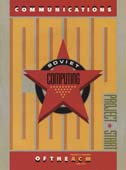From Washington: CEOs unite to influence U.S. technology policy
Verbal sparring over U.S. technology policy has persisted unabated for over one decade and two presidential administrations. As politicians, academicians, and industry representatives continue to volley policy virtues, the nation has watched its strong lead in the world's technology tournament slip another few notches. Industry observers lament that setting priorities, particularly in terms of R&D spending, has reached a turning point.




